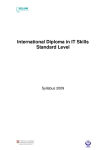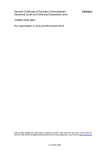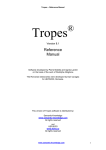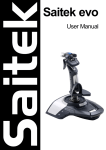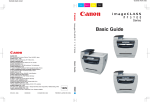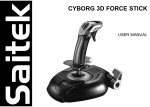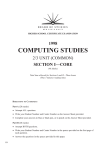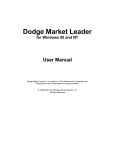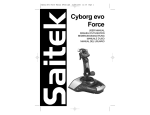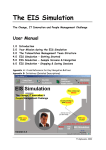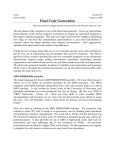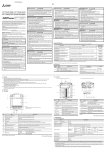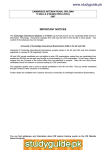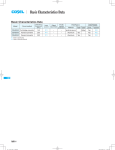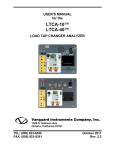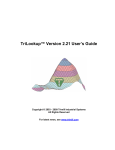Download IT Skills Standard Level
Transcript
IT Skills Standard Level http://www.cie.org.uk/docs/qualifications/cid/cidit/Syllabus_Standard.pdf Syllabus 2011 CONTENTS PAGE Section 1: Introduction ................................................................................................................ 3 Section 2: Overview of the Diploma. ........................................................................................... 5 Section 3: Syllabus Structure and Content .................................................................................. 9 Application Module 1: Using the Computer and Managing Files............................ 12 Application Module 2: Word Processing................................................................ 13 Application Module 3: Spreadsheets ..................................................................... 15 Application Module 4: Databases.......................................................................... 17 Application Module 5: Electronic Communication.................................................. 18 Application Module 6: Presentations ..................................................................... 19 Section 4: Administration Procedures ....................................................................................... 20 2 SECTION 1: INTRODUCTION 1.0 Cambridge International Diploma in Information Technology Information Technology (IT) influences the lives of everyone, wherever we live or work in the world. Almost every aspect of our daily lives now involves using IT skills. In the increasingly dynamic world of work, people need to be able to work effectively with IT, to develop transferable IT skills and to apply those skills across different contexts and software packages. With advances in technology, people are also keen to ensure that their IT skills are kept up to date to make themselves competent, capable and competitive in today’s employment markets. The Cambridge International Diplomas in IT recognize achievement in a range of skills, which are required to use effectively a number of IT applications. These skills are assessed on the computer in the context of practical tasks. Assessments for the Cambridge International Diplomas in IT are available on demand throughout the year to complement flexible training patterns and learning needs. The assessments use the latest developments in computer-based technology to assess a candidate’s ability to use software-specific applications and to develop IT skills. All assessment is carried out on-screen and the immediate feedback of results to candidates is a central feature of these diplomas. The Standard Level Diploma provides a framework for developing practical IT skills and knowledge in a range of IT applications and functions, and builds upon the broad introduction to IT skills provided by the Foundation Level Diploma. The Diploma has been developed specifically for the international market, recognizing the growing importance of employees working across geographic and cultural borders. There are no formal candidate entry requirements for the Standard Level Diploma. It is, however, expected that Centers will have the appropriate range of equipment and software needed to train and assess candidates. 3 1.1 The International Dimension Cambridge International Diplomas in IT embody performance standards valued in countries around the world. The use of IT is a transferable skill and can be demonstrated regardless of place, system or culture. The syllabus and assessments provide a framework through which candidates, wherever they might be, can be assessed reliably and validly against the performance standards set in a software-specific context. However, candidates should be aware that, with the use of an appropriate manual and sufficient practice, the IT skills acquired can be used across a variety of manufacturers’ software. The syllabus and assessments are available in English. The assessments do not directly assess language skills, but are designed to give candidates the opportunity to show they can apply the skills specified in the syllabus. 4 SECTION 2: OVERVIEW OF THE DIPLOMA 2.0 Aim The aim of the Standard Level Diploma is to assess a candidate’s ability to use Information Technology effectively when using specific software applications. Within each application area, candidates will be required to enter and manipulate data, work closely to given specifications and successfully complete a range of tasks as specified. During the assessments, they will be required to edit, copy, save and/or print the data on which they are working as appropriate. 2.1 Target Group The Standard Level Diploma is designed for anyone who has already gained a broad introduction to work-related IT skills and wishes further to develop competence in specific IT applications. It is suitable for students, employees and trainees who wish to develop practical IT skills and for those who wish to receive recognition for IT competence that they may already possess. Basic competence in keyboarding skills, the use of a mouse and the ability to load an application are assumed. A knowledge of general principles and procedures in the use of IT hardware and software is encouraged to be taught alongside the practical IT skills. Further guidance on these principles and procedures is given in Section 3.1 2.2 Diploma structure The Application Modules available in the Cambridge International Diploma in IT at Standard Level are as shown below: Application Module Using the Computer and Managing Files Word Processing Spreadsheets Electronic Communication Databases Presentations Status Core Module Core Module 45 minute practical task Core Module Core Module Core Module Core Module Core Module 45 minute practical task 45 minute practical task 45 minute practical task 45 minute practical task 45 minute practical task Each skill area can be tested separately as and when a candidate is ready and when the centre is able to schedule and accommodate the assessment process. All candidates will receive immediate feedback of results indicating how well they have performed and whether or not they have passed the module assessment. Successful candidates can receive a Statement of Results that is issued locally by the Registered Centre (see Section 2.8 below). To achieve the Cambridge International Diploma in IT at Standard Level, candidates must successfully complete all Core Modules. When the six Application Modules have been completed successfully, a candidate will receive a full Cambridge IT International Diploma certificate. 5 2.3 Learning Hours and Course Structures There is no fixed guide to the learning hours required for the individual modules or for the full Diploma. It is, however, expected that about 12 hours per module, or about 72 hours for the full diploma, will be sufficient for most students who start with a Foundation level competence in IT skills. This figure is a guideline only as different students will often progress at different rates and will generally start the course with a range of prior knowledge and experience. Centres should plan the duration and delivery of courses based on an understanding of candidates’ prior qualifications and experience. CIE considers that there are various effective methods of developing IT skills, including tutorials spread over a period of weeks or months, intensive training programmes, on-the-job training or other supervised work experience, and distance learning. There is, therefore, no single prescribed course structure leading to the Cambridge International Diplomas in IT. Centres and students may wish to start with the ‘Using the Computer and Managing Files’ module although there is no set route through the modules. It is possible for students to start with any module. For example, a student who is particularly interested in one of the applications covered may choose to begin with this Application Module. Success in this module may well encourage interest in and take up of the other modules in the Award. Centres may identify demand for courses linked to particular modules or need to provide for particular groups or organizations that need to develop or update specific skills. These are just two examples of the flexibility of provision that the diploma structure supports. Generally, whatever the method of skills development, students are first taught the skills required by particular processes (e.g. Word Processing) through the medium of appropriate application packages. Centres should note, however, that the IT assessment software is application software-specific. Attention should be given to familiarize candidates who have developed IT skills using other software packages with those used in the assessment. Centres are free to decide when to assess in terms of their own and the candidates’ readiness. 2.4 Learning Support Materials CIE provides a range of support materials that will aid both tutors in preparing for the delivery of their courses and candidates in their learning. These materials will contain exercises to be completed on the PC using data files provided as well as information to be read, learned and understood. The aim in providing these materials is not simply to provide a pre-packaged course but to help provide a suitable learning environment for candidates. Details of these materials, which consist of Candidate and Tutor Support Guides, are available from Vellum International Certification Expansion and CIE Customer Services. 6 2.5 Resources Students will require frequent access to appropriate IT facilities to develop their skills. Centres will therefore need to have sufficient, appropriate facilities available to allow students access as necessary. The scale of this provision will clearly depend on the number of candidates likely to enter for the assessments over a given period and the nature of the course and its method of delivery. The Cambridge IT International Diplomas are software specific and only suitable for use on PCs that operate using Windows 95, Windows 98 or Windows NT version 4.0 or later, Windows 2000 or Windows XP. The minimum specification for the PC running the Administrator software is: Pentium P166, 32 Mb RAM (64 Mb RAM highly recommended), 256 Colours, 640x480 resolution, 50 Mb Hard Disk space available, multimedia enabled (i.e. including a CD-ROM drive), and with a Printer Driver installed. At this specification, the screen will not show all of the graphics properly and a display set to 800x600 with 65576 colours is highly recommended. The minimum specification for a PC running the Testing software is: Pentium P166, 16 Mb RAM (64 Mb RAM highly recommended), 256 colours, 640x480 resolution, mouse, keyboard and VGA colour monitor. The same recommendations as above apply with regard to the display. The PC user will also need to be able to have access to Microsoft Office Professional 97, Office 2000 Professional or Office XP Professional products. PCs also need to fulfil the minimum specification required to run the respective MS Office Professional applications. Assessment for four of the five Application Modules is built on Microsoft products. For these four modules, students will be assessed using the particular software packages. Students should, however, be encouraged to realize that, with the aid of a manual, they can learn the necessary skills and easily transfer their skills to a variety of products and other packages, should they need to do so. 2.6 Method of Assessment At the end of a period of study, or when they are ready, candidates take a CIE-set assessment. These assessments are computer-based and are available on demand. Centres enter candidates for the assessments using the software supplied by CIE on a CDROM. The Centre Administrator (using the software supplied) generates the test exercises following the guidelines issued by CIE. Candidates then take the assessment on a computer, using the on-screen exercise instructions to navigate through the actual assessment. Candidate Instructions for taking the IT assessments are available on the CD-ROM. These are printed and distributed by the Centre to candidates prior to the test. Each Application Module in the Diploma is assessed separately and distinctly, with assessments comprising a number of tasks being taken under controlled conditions at the Registered Centre. For the four Application Modules of Word Processing, Databases, Spreadsheets and Presentations, the assessment is divided into three ‘separate’ exercises. Each exercise has a set of on-screen instructions, which the Centre Administrator can print out and distribute to candidates who wish to follow instructions on paper, prior to the test commencing. 7 The Application Module in Using the Computer and Managing Files comprises a single exercise with several sets of instructions involving manipulation of a number of files across a number of directories and associated file management activities. The Electronic Communication module is assessed by a combination of two ‘separate’ practical exercises. The practical tasks test candidates’ skills in managing email and also in basic internet skills. Both email and internet tasks have been designed without actual access to the Internet, so that candidates from centres without internet connection can undertake this module. The assessments for these modules focus on the candidate’s ability to carry out practical tasks rather than to explain the theory of how the tasks are completed. Candidates are assessed on their performance of these tasks. Each Application Module assessment is designed to be completed in 45 minutes or less. Candidates are shown the time remaining for the assessment by an on-screen clock. At the end of 45 minutes the test will automatically end and begin to mark the tasks carried out by the candidate. 2.7 Availability Assessments for the Cambridge International Diplomas in IT are available at any time throughout the year. Centres must be registered with, and approved by, CIE before the Administration and Assessment software is issued. A Registered Centre is then issued with a CD-ROM containing the software that is licensed to the Centre for use as intended. This software allows Centres to offer assessments as required to fit in with the delivery of training. Assessments may be taken at the end of the course of study or they may be taken at intervals over the length of the course as an aid to learning. Centres can decide when the assessment takes place, as there is no fixed timetable. The Administrator software system allows assessments to be selected for candidates and a number of reports on an individual’s performance can be generated. Centres purchase in advance, and are assigned, blocks of tests covering all the Application Modules, on obtaining the security codes from CIE (see Section 4). 2.8 Quality Control and Assurance - Protecting Cambridge International Diploma Standards CIE has to ensure the integrity of its assessment procedures, so that everyone can have full confidence in the standards issued by CIE. In applying for Registered Centre status, Centre staff acknowledge that they will follow the requirements of the award, to the standards described in the syllabus and guidelines. CIE will assess the suitability of staff, premises, resources, and procedures, before allowing Centres to operate the IT Diplomas, or other, Diplomas. As this may involve a visit by CIE personnel to a Centre, Centres are advised to apply for the status of ‘Registered Centre’ well before the intended start of the course in order to allow time to arrange such an inspection. CIE reserves the right to inspect a Centre and its facilities at any time. As a further guarantee that standards are upheld, Centre Registration is granted for one year only from the date of approval of an application. Centres must apply for re-Registration each year and be prepared to undergo inspection if necessary. If CIE has reason to doubt the quality assurance procedures within a Centre, a CIE representative will be sent to review the practice of the Centre. These procedures are vital to protect the value of the CIE qualifications. 8 SECTION 3: SYLLABUS STRUCTURE AND CONTENT 3.0 Assessment Objectives and Performance Criteria There follow details of the Application Modules, all of them need to be completed for a candidate to gain a Cambridge International Diploma in IT at Standard Level. For each module, the relevant Assessment Objectives are specified, the Performance Criteria that are assessed are given and the Skills to be tested are listed. Assessment Objectives define the specific skills that must be demonstrated for the award of that module. Each Assessment Objective is sub-divided into Performance Criteria. Performance Criteria define the tasks or knowledge requirements which candidates are actually required to demonstrate to achieve the Assessment Objective. Skills to be tested detail the performance criteria further and specify exactly what candidates will need to be able to do in the test. To be prepared fully for the assessments provided, candidates must be able to meet all Assessment Objectives. In any given module assessment, however, not all Performance Criteria may be directly assessed. Candidates are expected to possess basic computer keyboard and mouse skills. These skills are not assessed specifically as part of the diplomas as they are fundamental to all operations using a Personal Computer. It is also expected that candidates trained on word processing, database, spreadsheet and presentation applications other than those from Microsoft will have had some opportunity to try these products before being assessed. Important note: As described at the beginning of the individual modules candidates are expected to know and do all the assessment objectives from the Foundation level syllabus. Standard level tests will test assessment objectives from both Foundation and Standard level syllabuses. 3.1 General Principles and Procedures The International Diploma in IT focuses on the acquisition of software and application-specific knowledge and skills. It is assumed that, during a course of study leading to the Diploma, candidates will be introduced to and given opportunity to learn general principles and procedures for using the computer safely and effectively. An awareness of best practice in the management of IT and its appropriate use should be encouraged. The fundamental principles and procedures which underpin this qualification, and of which candidates should be aware, are: General Principles Health and safety aspects Good working conditions Taking care of equipment 9 Basic Functions Turning the computer on and off Opening and exiting the operating system Opening and closing application Handling passwords (adding/changing the password, logging in etc.) Switching between applications Mouse operations (i.e. how the mouse can be used to accomplish operations such as opening menus, moving, selecting, use of the right mouse button for shortcut menus etc.) Menus (what the different menus and sub-menus contain, available and unavailable commands, use of help function) Knowledge of dialogue box functions and contents Using keyboard combinations Sizing windows (maximising, minimising, restoring, stretching) Moving windows Scrolling windows Use of toolbars Adjusting the Program Setting the date/time Changing the settings Changing the desktop or a window Formatting a disk Working on a disk or hard drive 10 File Management Changing the name of files Making back-up copies Printing Starting a printout Cancelling a printout Choosing a printer Changing the page set-up The print queue (access and function) 11 3.2 Syllabus Content 3.2.1 Application 1: Using the Computer and Managing Files This application is designed to build on the computing and file management skills acquired at Foundation level. The candidate should possess the skills and knowledge required to understand and perform standard operations on a computer, including the ability to use and control a mouse. Before undertaking this module candidates should know how to: initialize and close the application and work with directories and create, open, rename, move, copy and delete files and save and print files. Assessment Objectives 1. General Procedures and settings Performance Criteria a. Basic functions and settings 2. Desktop and Windows a. Desktop b. Windows 12 Skills to be tested a1. Start, Shut down, restart of the computer, following the proper procedures a2. Show operating system information and the available RAM of the system a3. Date and Time settings a4. Set the sound, screen resolution and the color depth of the system a5. Use of the screen saver a6. Switch the system language a7. Use of print screen a8. Use of Help a1. Understanding of the functionality of the desktop elements: Start menu, Task bar, desktop, icons a2. Use of start menu, to open and close an application a3. Open file, folder application, system icon from the desktop a4. Create a shortcut b1. Understanding basic window elements: Title bar, Menus, Scroll bars, toolbars, status bar b2. Minimize, Maximize, Restore, close, move resize of a window b3. Switch between open windows b4. Sort the contents of a folder Assessment Objectives 3. Data Storage, files and folders Performance Criteria a. File and folder structure b. Managing Files and folders 4. Help tools a. Help tools 5. Manage applications, printous a. Applications a. Printouts 13 Skills to be tested a1. Understanding of the data store devices for files, folders and file hierarchy a2. Navigate between folders and data store devices a3. Understanding of the file name structure and recognition of common file types b1. Create folder, subfolder b2. Rename folder, subfolder b3. Select multiple files or folders b4. Move files or folders b5. Copy files or folders b6. Delete files or folders b7. Understanding and setting the files and folders attributes a1. Restore files, folder from the recycle bin, empty the recycle bin a2. Use of search a3. Use of recent documents a4. Understanding of the term compressing files a5. Compressing, Extracting files a6. Know what a computer virus is, what are the effects on a computer and ways of spreading. Know the advantages-disadvantages of using antivirus applications a1. End task of an application which is not responding a2. Understanding of the procedures of installing-uninstalling applications a1. Installing a printer a2. Set the default printer a3. Managing print jobs: Pause, Restart delete print jobs 3.2.2 Application 2: Word Processing This application is designed to build on the word processing skills acquired at Foundation level. The candidate should possess the skills and knowledge required to understand and perform everyday uses of a word processing package to display information in both electronic and paper form. Before undertaking this module candidates should know how to: open and close documents and create, edit, format, move and delete text and use the spell-check and help facilities and save and print documents. Assessment Objectives 1. Basic functions and Word processing application Environment Performance Criteria a. Working with documents b. Word Proccessing application environment 2. Word Proccessing a. Working with text b. Text manipulation c. Help tools 14 Skills to be tested a1. Create, Open, Close, Save document a2. Save document with different type or / in different folder or / with different name a3. Switch between open document a4. Use of available templates for document creation b1. Show/Hide toolbars b2. Switch between available view of document b3. Set zoom state b4. Use of help b5. Know how to set basic application options: default folder for opening-saving documents, user name b6. Show/Hide non printing characters a1. Add text a2. Edit, delete text a3. Add special characters and symbols b1. Select characters, words, lines, paragraphs, all document b2. Copy, cut and paste text in the same document or in other document c1. Use of Undo and Redo c2. Use of Find and Replace c3. Spell check the document c4. Use auto hyphenation Assessment Objectives 3. Fond & Paragraph Formatting Performance Criteria a. Format fonts b. Format paragraphs 4. Document Formatting a. Page Setup b. Headers and Footers c. Breaks 5. Objects a. Object manipulation 6. Tables a. Table Creation and working with table contents b. Format Table 15 Skills to be tested a1. Select font and font size a2. Bold, italic, underlined font a3. Change font color a4. Superscript, subscript a5. Auto change upper case to lower case a6. Copy format b1. Alignment options of paragraph b2. Create indents b3. Set spacing and line spacing of paragraphs b4. Use of borders and shading to a paragraph b5. Create lists with bullets or numbers b6. Set & use tabstops b7. Use of available paragraph styles a1. Set page margins a2. Set paper size, page orientation b1. Add page numbers to header, footer b2. Page numbering b3. Add available fields in header, footer: date, total pages, file path c1. Add/Delete page breaks c2. Add/Delete line break a1. Add image, graphic to document a2. Delete image, graphic a3. Copy, move image, graphic to the same or other open document a1. Set rows, columns, position of table a2. Add, edit text to table a3. Select rows, columns, cells of a table a4. Add, delete rows or columns or cells of a table a5. Set row height or column width of a table b1. Format cell borders: width, color, style, linestyle b2. Apply shading to cells Assessment Objectives 7. Working with mail merge Performance Criteria a. Preparation and merge the master document with the data source for mail merge 8. Printouts a. Preparation and printing Skills to be tested a1. Set, edit master document for merge (letters-labels) a2. Open data source file for merge a3. Add merge fields a4. Merge master document and data source file for mail merge a1. Print preview document a2. Printing options: copies, specific pages, select specific printer a3. Print document to specific printer Important Note This application module is only available for assessment using Microsoft Word 97, Word 2000 or Word 2002/XP or Word 2003. 16 3.2.3 Application 3: Spreadsheets This application is designed to build on the spreadsheet skills acquired at Foundation level. The candidate should possess the skills and knowledge required to understand and perform everyday uses of a spreadsheet package to create a spreadsheet, arrange data and make simple calculations. Before undertaking this module candidates should know how to: open, close, edit and amend spreadsheets and enter, edit, sort data and format cells and enter and apply simple formulae and save and print spreadsheets. Assessment Objectives 1. Basic Functions & Application Environment of Spreadsheets Performance Criteria a. Working with workbooks b. Working with worksheets c. The Application Environment 2. Data proccessing a. Add and edit data in the spreadsheet b. Working with cells 17 Skills to be tested a1. Work with workbooks a2. Create, Open, Close, Save workbooks a3. Save workbook with different name, type, in a different folder or with different name a4. Switch between workbooks b1. Navigate through worksheets of the workbook or other open workbooks b2. Add new worksheet b3. Delete worksheet b4. Rename worksheet b5. Copy, move worksheet in the workbook or in another workbook c1. Show/Hide toolbars c2. Go to specific cell or cell area c3. Set the zoom state c4. Stablize/Unstabilize areas of a spreadsheet c5. Set basic options of the application: default folder for open/save files, user name c6. Use of help a1. Add numbers, dates to cells a2. Add more data to a cell, edit cell contents a3. Delete cell contents a4. AutoFill data to cells a5. Find and replace data to cells a6. Ascending/Descending Sorting to cell areas a7. Use of Undo and Redo b1. Move, copy cell contents to the same to different worksheet b2. Add, delete cells, cell area, rows, columns Assessment Objectives 3. Format Data Performance Criteria a. Format Worksheet b. Format cells 4. Mathematical types & Functions a. Cell references b. Apply mathematic types without formulas c. Functions 5. Graphs a. Create Graphs b. Edit and Format a Graph 18 Skills to be tested a1. Select cell, cell area, rows, columns, all cells of a worksheet a2. Change row height, column width, auto size to the data b1. Format cells with numeric contents: percentage, decimals, currency, thousand separator b2. Format cells with date contents b3. Select font and font size b4. Set bold, italic and underline font b5. Change font color b6. Wrap contents of a cell b7. Set alignment, orientation of cell contents b8. Merge and center align a title across a cell area b9. Change contents orientation b10. Borders and Shading of cells b11. Copy format between cells a1. Use of relevant and absolute values in formulas of mathematic types b1. Create mathematical type for adding, substraction, multiplying and dividing b2. Create mathematical type with cell references c1. Use of of Functions: SUM, AVERAGE, MAX, MIN, COUNT, COUNTA c2. Use of Logical Functions: IF c3. Use of Date Functions: (TODAY, NOW) c4. Use of Search Functions(VLOOKUP) a1. Create Graphs from data a2. Select, change graph type: pie, bars, columns, line b1. Move,Copy, Delete, Resize graph b2. Add title, or labels to a graph b3. Color change of Bars, Columns, lines and pie pieces b4. Change color of graph font Assessment Objectives 6. Objects 7. Printouts Performance Criteria a. Working with images a. Page Setup b. Print Skills to be tested a1. Import, move and resize image a1. Page margins of a worksheet a2. Page orientation a3. Adjust paper size a4. Customize Header/Footer a5. Show/Hide grid lines a6. Show/Hide headers of columns and rows a7. During printing, repeat rows or columns in every page a8. Set print area in a specified page range by width and height b1. Worksheet Print Preview b2. Use of print options: Copies, Area, Graph, specified printer b3. Print to a specific printer Important Note This application module is only available for assessment using Microsoft Excel 97, Excel 2000 or Excel 2002/XP or Excel 2003. 19 3.2.4 Application 4: Databases This application is designed to build on the database skills acquired at Foundation level. The candidate should possess the skills and knowledge required to understand and perform everyday uses of a database package to build a simple database and create simple queries and reports from an existing database. Before undertaking this module candidates should know how to: open and close a database and create a database structure and enter, edit and search data and save and print databases. Assessment Objectives 1.Introduction Performance Criteria a. Database Terms 2. Basic Functions & Application Environment of Database a. Basic Functions 3. Tables a. Table Functions b. Relations 20 Skills to be tested a1. Understand the term Database a2. Understand the elements and structure of a relational database: Tables, Records, Fields, Relations a3. Understand datatypes of fields and their basic properties: Size, Format a1. Open. Close Database Application a2. Open, Close a Database a3. Create, Save a Database a4. Show, Hide available toolbars a5. Switch between different views, tables, forms, reports a6. Use of help a1. Create table, name fields and set the correct datatype a2. Create validation rule for a field a3. Change format property of arithmetic and date fields a4. Add, delete field from a table a5. Term and set primary key a6. Save, close, delete table a7. Add, edit records to a table a8. Navigate to records, fields of a table a9. Change column width of a table a10. Move field from a table b1. Create, delete 1 to 1 relation, 1 to many between tables b2. Use of data integrity between fields B3. Create relations during queries design Assessment Objectives 4. Forms Performance Criteria a. Create, Format forms 5. Working with data a. Basic functions b. Queries c. Reports 6. Printouts a. Prepare & Print Skills to be tested a1. Create, Save Form a2. Add, Edit text from Header/Footer of a form a3. Open, Close a Form a4. Use of a Form for adding, editing and deleting records a5. Move to next/previous record, first/last record, specific record using the form a6. Delete a form a1. Apply filter to a table/form a2. Use of Search facility in the fields of a table a3. Sort data in tables, forms b1. Create, Save select query with one or two tables b2. Add fields to a query, show/hide fields in the query b3. Add search criteria with logical operators : OR , AND b4. Sort data in a query b5. Show query results b6. Close, delete a query c1. Create, Save a report from a table or a query c2. Group data by a field, and sort data with asceding or descending order c3. Use of sum, max, min, average and count in a grouped report c4. Place fields in report as specified c5. Add, edit text in header/footer of a report c6. Save, Delete a report c7. Open Close a report a1. Print preview tables, forms, reports a2. Set page orientation and paper size a3. Print whole/part of a table, report Important Note This application module is only available for assessment using Microsoft Access 97, Access 2000 or Access 2002/XP or Access 2003. 21 3.2.5 Application 5: Electronic Communication This application is designed to build on the Electronic Communication knowledge acquired at Foundation level. The candidate should understand what is meant by electronic communication and possess knowledge of the principles involved in obtaining information from network information services. Before undertaking this module candidates should know how to: navigate with a web browser, change the display settings and use a search engine, print a web page and open, reply to, forward, delete and send messages and create folders for messages. Assessment Objectives 1. Networks and Internet Performance Criteria a. Terms b. Internet Security 2. Navigation in the internet b. Browser Environment b. Navigation in the Internet and display information in the browser c. Favorites 22 Skills to be tested a1. Definition and understanding of terms Internet, World Wide Web, HTTP, URL, ISP, FTP, Hyperlink a2. Analyse web page address (URL), email address and analyse threir structure a3. Understand the tem Internet, WWW and distinguish them b1. Know the danger of being infected with a computer virus during download files from the internet b2. Understand the term Firewall b3. Understand the term Digital Certificate a1. Open, Close Browser a2. Change the home page of the browser a3. Stop loading a web page a4. Refresh the contents of a webpage a5. Show/Hide toolbars a6. Use of Help facility b1. Navigate to a web page using its URL b2. Navigate to web pages using hyperlinks b3. Navigate Back or Forward to pages that have already been visited b4. Show/Hide images from a web page c1. Open a webpage from Favorites/Bookmarks c2. Add/Remove a web page from favorites/Bookmarks c3. Create folder in Favorites/Bookmarks and add web pages in it Assessment Objectives 3. Information Search Performance Criteria a. Search in webpages and manipulate their contents b. Printing 4. Electronic mail a. Basic terms of electronic mail b. Email Application Environment 23 Skills to be tested a1. What is a search engine and how is it used? a2. Search information using words or phrases a3. Searched with combined criteria a4. Save a web page in specific folder as text of HTML file a5. lήψh aρχeίου (download) aπό mja jfοσelίda kaj aποiήkeυσh σe ορjσmέnh iέσh b1. Print preview a web page b2. Set printint parameters a1. Understand the structure and the limits of an email address a2. Understand the danger of being infected by computer virus in attached file of an email a3. Understand the advantages of using web mail b1. Open, Close email application b2. Understand and open basic folders: Inbox, Outbox, Sent, Draft, Deleted b3. Open, read and close an email b4. Mark mail as read b5. Use help facility of the application Assessment Objectives Performance Criteria c. Work with mails d. Manipulate mails e. Address Book f. Printouts Skills to be tested c1. Add/Remove columns in inbox folder (sender, subject, received date) c2. Create new mail c3. Add email addresses in To, CC, BCC fields c4. Add subject c5. Add text in mail body c6. Spell check the mail c7. Attach file to mail c8. Delete attached file from the mail c9. Copy, Move text between mails c10. Send mail with priority c11. Send mail using mail groups c12. Forward a mail c13. Open, save attached files in specified folder c14. Reply to a mail with or without the original mail c15. Reply to sender, reply to all c16. Add/Remove Flag from mail d1. Create, name and manipulate folders for successful mail organise d2. Delete a mail d3. Restore mail from deleted folder d4. Empty deleted folder e1. Create and use group mails e2. Add or Delete a contact in the address book e3. Update address book from incoming mail f1. Print preview of mail f2. Select print parameters of a mail f3. Print a mail Important Note This application module is only available as a combination of two practical exercises that simulate email and Internet environments. The practical exercises are designed without actual access to the Internet to enable all organisations to gain accreditation for the knowledge and skills required. 24 3.2.6 Application 6: Presentations This application is designed to build on the presentation software skills acquired at Foundation level. The candidate should possess the skills and knowledge required to understand and perform everyday uses of a presentation package to display information in electronic form for presentation and in paper form for handouts. Before undertaking this module candidates should know how to: initialize and close the application and adjust basic settings and open and modify existing presentations and display a presentation and use spell-check and help facilities and save, print and deliver a presentation. Assessment Objectives 1. Basic Functions & Presentations Application Environment Performance Criteria a. Handling presentations b. Presentation Application Environment c. Help tools 2. Designing presentation a. Design templates & slide master b. Working with slides 25 Skills to be tested a1. Create, open, close, save presentation a2. Save presentation with different type, different folder or with different name a3. Switch between open presentations b1. Show/Hide toolbars b2. Switch between available views of presentation b3. Set zoom percentage b4. Know how to set basic options of the application: default folder for open-save presentation, user name c1. Use of help facility c2. Show/Hide toolbars c3. Undo and Redo c4. Spell check the presentation a1. Apply design template to a presentation a2. Add, delete image, graphics, drawing objects from slide master a3. Add text, numbering, date, footer to slides b1. Add, delete slides from a presentation b2. Apply, change slide layout b3. Copy, move slides in the presentation or between open presentations b4. Change font color in one or in all slides of the presentation b5. Adjust slide size to the use of presentation: show in screen, print slides etc. b6. Show/Hide the slides of a presentation Assessment Objectives 3. Manipulate text and images Performance Criteria a. Working with text b. Images, graphics 4. Objects a. Drawing objects b. Graphs c. Orgcharts 26 Skills to be tested a1. Add text to a slide, narator notes a2. Edit, delete text a3. Select font and font size a4. Bold, italic, underline font a5. Change font color a6. Apply shadow to text a7. Automatic text change from uppercase to lowercase a8. Text alignment (left, right, center) a9. Change bullets style, auto numbering a10. Change line spacing in auto number list or list with bullets b1. Import image from file, graphic from the available collection of the application b2. Resize images, graphics a1. Draw objects from the available tools of the application (lines, arrows, rectangles, circles, ellipse, text boxes, etc.) a2. Format Drawing objects: fill color, color, border width, borderstyle, shadow a3. Rotate, Flip drawing objects a4. Aligh drawing object in relation to the slide a5. Change layout of drawing object a6. Resize drawing objects b1. Create graphs from available facility of the application b2. Change graph type b3. Change color of different parts of the graph b4. Resize Graph c1. Create orgchart from available facility of the application c2. Add text in orgchart places c3. Add, delete orgchart places c4. Change orgchart structure c5. Resize orgchart Assessment Objectives 5. Manipulate objects Performance Criteria a. Copy, Move, Delete 6. Presentation show and printouts a. Enhancing presentation b. Printouts Skills to be tested a1. Copy text, images, graphics, graphs, orgcharts, drawing objects between slides or between open presentations a2. Move text, images, graphics, graphs, orgcharts, drawing objects between slides or between open presentations a3. Delete text, images, graphics, graphs, orgcharts, drawing objects between slides or between open presentations a1. Apply motion effect to text from the available tools of the application a2. Add transition effect between slides of a presentation a3. Show presentation from start of from specific slide b1. Printing paremeters: paper size, orientation, copies b2. Select printing object: slides, audience notes, narator notes Important Note This application module is available for assessment using Microsoft PowerPoint 97, PowerPoint 2000 or PowerPoint 2002/XP or PowerPoint 2003. 27 SECTION 4: ADMINISTRATION PROCEDURES 4.0 Administration Centres must be registered with CIE in order to enter candidates for Cambridge International Diploma in IT. Application Forms for Centre Registration are available from Vellum International Certification Expansion and CIE Customer Services. On registration as a Centre for the Cambridge International Diploma in IT, Centres will receive a CD-ROM, together with the Administration and Installation Guide. This guide details how to install the software and how to use it to register candidates for the individual Application Module assessments. It also contains instructions for the administration of the assessments and instructions and guidance for candidates. Centres will be required to nominate a Centre Administrator who will be responsible for the administration of the diplomas and for the generation and conduct of the assessments to the criteria laid down by CIE in this Syllabus and the Administration and Installation Guide. On installation of the software from the CD-ROM, onto either an individual PC or a network, the use of the software will prompt the centre to contact CIE for the necessary Trigger and Test Allocation (security) Codes. These codes are required for entry into the Administrator software and, subsequently, for allocating blocks of tests for use at the Registered Centre. The Administration and Installation Guide contains detailed explanations on these procedures. 4.1 Results and Certification A candidate sitting an Application Module assessment will receive feedback on performance immediately on completing the test. This information will be presented on screen in terms of a percentage score on the module and the percentage required to achieve a pass. Candidates who pass a module will be eligible for a ‘Statement of Results’ for that module. These Statements are printed locally, by the candidate’s centre, at the centre’s convenience and indicate the application area in which the candidate was successful together with candidate and centre details and the date of the assessment. The Centre Administrator will be provided with the necessary stationery to print ‘CIE Statement of Results’ for each candidate per module achieved. This will provide candidates and centres with immediate and formal recognition of a candidate’s achievement. Results from the Application Modules remain valid for three years from the date of the assessment. Candidates who achieve six Application Modules within the three-year period will be awarded the Cambridge International Diploma in Information Technology certificate at Standard Level. This certificate is issued by CIE and is only available to candidates at the end of the Award. Individual module certification is also available to centres at a small extra charge. Details are available from Vellum International Certification and CIE Customer Services. The CD-ROM provided to Registered Centres contains software specifically designed to allow the feedback of results for each candidate and Application Module tested at the centre following the assessments. The Centre Administrator will receive the necessary details from Vellum International Certification Expansion and CIE to enable them to produce reports on test results from individual candidates or groups of candidates. These Reports provide evidence of those areas where candidates may need further training or practice. Centres will be required to send two sets of information to Vellum International Certification Expansion and CIE for verification purposes. First, a copy of all test results is sent in the form of a spreadsheet (produced by the Administrator software). This report is sent to CIE once each month. Then, once each quarter, the whole testing database is sent through for formal verification. In addition to data verification, the information received is used by CIE to produce certificates 28 for candidates who are eligible for a full Cambridge IT International Diploma. When a candidate has achieved six Application Modules, a certificate will be issued by CIE and despatched to the centre from CIE. Further information and guidance on the Cambridge International Diploma in IT are in the Administration and Installation Guide, which is issued to Registered Centres with the CDROM. On receipt of the CD-ROM centres will also be able to print out a User Manual, Candidate Instructions and other relevant documentation. 4.2 Software Installation Queries and Other Enquiries In the case of difficulties in installing the software from the CD-ROM, or in the case of any other queries in connection with running the Cambridge International Diploma in IT, please contact the Vellum International Certification Expansion Customer Services who will be able to deal promptly with your enquiry. 4.3 Fees For current fees for Registration as a Centre for CIE Qualifications, including Cambridge International Diplomas, and entry fees for the Application Modules for the Cambridge International Diploma in IT, please contact the Vellum International Certification Expansion Customer Services. 29





























